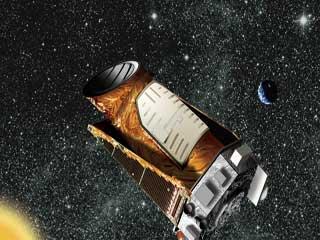
Kepler spacecraft has identified more than 1,200 planetary candidates ranging in size from Earth to Jupiter. Photo: NASA
CAMBRIDGE (BNS): A new instrument is designed to confirm and characterise Kepler’s planetary candidates.
A precision spectrograph HARPS-N (High-Accuracy Radial velocity Planet Searcher-North), is designed to detect the tiny radial-velocity signal induced by planets as small as Earth, if they orbit close to their star.
Harvard-Smithsonian Center for Astrophysics is building the new instrument called HARPS-North.
Till now, NASA's Kepler spacecraft has located more than 1,200 planetary candidates orbiting stars.
"The Kepler mission gives us the size of a planet, based on the amount of light it blocks when it passes in front of its star. Now we need to measure planetary masses, so that we can calculate the densities. That will allow us to distinguish rocky planets and water worlds from ones dominated by atmospheres of hydrogen and helium," explained Smithsonian astronomer David Latham in a CfA release.
HARPS-N will essentially duplicate the successful design of an existing instrument in the Southern Hemisphere, the original HARPS. It will be augmented by technology now under development, such as a laser comb for wavelength calibration, which will allow it to detect subtle radial-velocity signals.
HARPS-N will be installed on the 3.6-meter Telescopio Nazionale Galileo (TNG) in the Canary Islands, from where it will be able to study the same region of the sky viewed by the Kepler spacecraft, within the northern constellations of Cygnus and Lyra.
First light for HARPS-N is expected to take place in April 2012.
 Previous Article
Previous Article Next Article
Next Article













The Indian Air Force, in its flight trials evaluation report submitted before the Defence Ministry l..
view articleAn insight into the Medium Multi-Role Combat Aircraft competition...
view articleSky enthusiasts can now spot the International Space Station (ISS) commanded by Indian-American astr..
view article